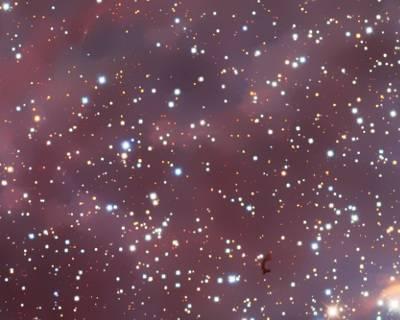search
| doctor | Ni Wei-de |
| alias | styleZhong-xian akaChishan Laoren |
bubble_chart Description
Ni Wei-de, styled Zhongxian, later known as Chishan Laoren, was born around 1303 and passed away in 1377. Throughout his life, he inherited and developed the Dongyuan theory of the spleen and stomach, using it to guide the diagnosis and treatment of eye diseases. He classified eye diseases based on etiology and pathogenesis, formulated treatment principles and prescriptions, and linked eye diseases to human body functions and external environments, pioneering comprehensive pattern identification, which had a profound impact on the development of ophthalmology in later generations.
- His studies were rooted in Dongyuan, focusing on the spleen and stomach. He fully embraced Dongyuan's academic views. Building on Li Dong-yuan's ideas that "internal damage to the spleen and stomach leads to various diseases" and "deficiency of stomach qi causes disorders in the ears, eyes, mouth, and nose," he emphasized that damage to the spleen and stomach is the primary cause of many eye diseases. For example, he explained the formation of eye nebula by stating, "If one takes too much cold and cooling medicine, the spleen and stomach are injured, and the vital energy cannot rise, gradually leading to this condition." In discussing "diseases caused by the seven emotions, five pathogens, overwork, and irregular eating," he noted, "The seven emotions and five pathogens harm the two meridians, irregular eating harms the stomach, overwork harms the spleen. When the spleen and stomach are diseased, the natural vitality of the body cannot function properly, thus causing illness." Influenced by Dongyuan's theory of yin fire, he also believed that in cases of internal visual obstruction, "excessive labor causes the heart to fail in its duties, and ministerial fire takes over... Fire pertains to the pericardium, and since all meridians ascend to nourish the eyes, excessive fire causes the meridians to boil, leading to internal visual obstruction." This aligns with Dongyuan's theory. The formulas he used, such as Peaceful Stomach-Nourishing Decoction and Qi-Replenishing Sharp and Bright Decoction, both focused on tonifying the spleen and replenishing qi. Consequently, he classified eye diseases into 18 categories based on etiology and selected formulas based on the spleen and stomach theory, totaling 9 categories. His treatment formulas for eye diseases numbered 46, with 12 derived from Dongyuan, demonstrating the significant influence of Dongyuan's theories on him.
- He emphasized holistic diagnosis and highlighted inspection. He excelled in the visual inspection of the eye, often using it as a crucial basis for diagnosis and differential diagnosis. For example, in white of the eye inspection, he observed the morphology and color of conjunctival congestion; in black of the eye inspection, he noted the size and shape of corneal nebula, whether it was ulcerated, and changes in color; in pupil inspection, he examined the size, shape, and color, fully highlighting the characteristics of ophthalmic diagnosis. At the same time, he also valued comprehensive inquiry, such as the history of the disease, bowel movements, dietary habits, thirst, and accompanying symptoms, to understand the patient's overall condition as a basis for pattern identification. He pioneered the comprehensive pattern identification of ophthalmic diseases.
- To generalize diseases by causes and to treat based on pattern identification. Before him, the classification of eye diseases was mostly based on symptoms, which not only resulted in numerous categories that were difficult to memorize and apply, but also failed to reveal the intrinsic connections between them, making it unfavorable for clinical treatment. He pioneered the classification by etiology, dividing eye diseases into 18 categories such as excessive heat, wind-heat, seven emotions and five thieves, blood stasis, qi dispersion, indistinct blood and qi, and heat accumulation, generalizing diseases by causes and seeking commonalities among differences. At the same time, he also paid attention to seeking differences within commonalities and treating based on pattern identification. For example, in the section on "diseases caused by seven emotions, five thieves, overwork, and irregular eating," he identified the common etiology and pathogenesis of spleen and stomach injury due to seven emotions, five thieves, overwork, and irregular eating, and the common main symptoms of "red and painful eyeballs, pain like needle pricks, corresponding to Taiyang (EX-HN5), weak eyelashes, often wanting to close, unable to look for long periods, soreness after prolonged viewing, nebula formation with depressions that may be round, square, long, short, dot-like, thread-like, cone-like, or chisel-like," summarizing several changes in the black of the eye and conjunctival diseases, which can be described as seeking commonalities among differences. However, within this category of diseases, there are those with original qi sinking and unable to rise, manifesting mainly as dark of the eye and depressed nebula; those with blood stagnation accompanied by wind, causing unbearable pain in the eyeball; and those with yang injury due to cold medicine, leading to vital qi not reaching the nine orifices. Therefore, while using yang-raising and clear yang-promoting medicines, there are also different prescriptions such as Bupleurum Revival Decoction, Chinese Angelica Nourishing Decoction, and Yang-Assisting and Blood-Activating Decoction, reflecting the characteristic of seeking differences within commonalities and treating based on pattern identification.
- Internal and external treatment, selecting the best to use. Surgical therapy and drug treatment are two indispensable approaches in Chinese medicine ophthalmology. He advocates for the combined use of internal and external treatments, selecting the best to use. He has a complete discussion on ophthalmic surgery, from indications to the surgical process, as well as the prognosis estimation. He has discussed surgical therapies for phlegm node in eyelid (chalazion), pterygium, trichiasis, and round nebula cataract (senile cataract), such as the metal needle technique for cataract removal, stating, "First, have the patient wash their eyes with cold water until they feel like ice,... use the left thumb and index finger to hold the eyeball steady, preventing it from moving, then use the right hand to hold the duck tongue needle, approaching the black of the eye as if it were the tip, inserting the needle, the white of the eye is very thick, making insertion very difficult, it is necessary to have a steady hand and complete force, a heavy needle will break it. Then, turn the needle head, scraping with the needle knife, once the cataract falls, vision will be clear." His description of cold anesthesia, incision selection, and the surgical process is meticulous and detailed.





